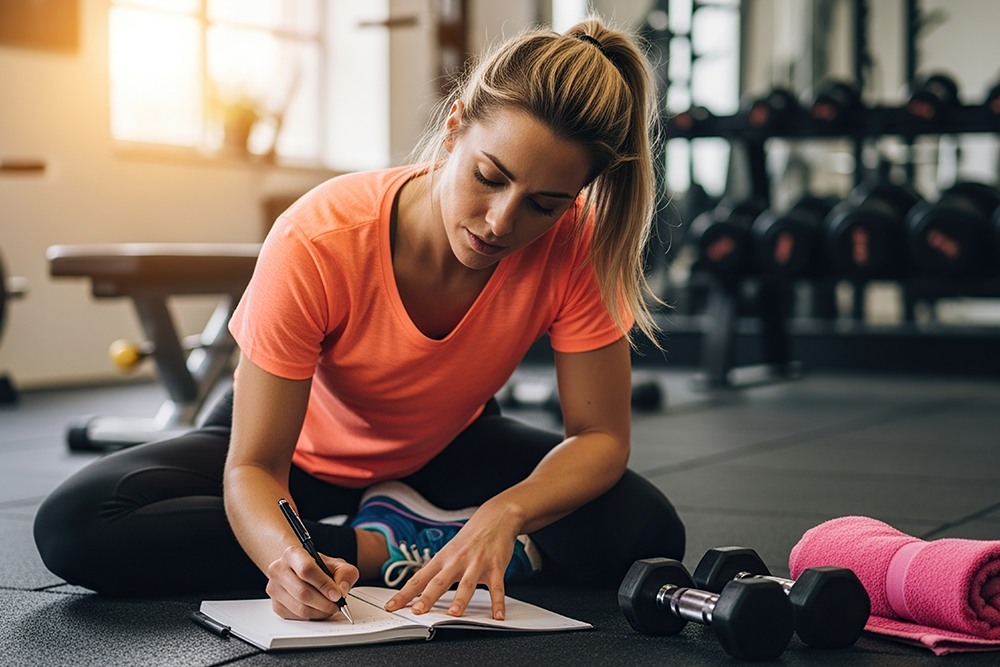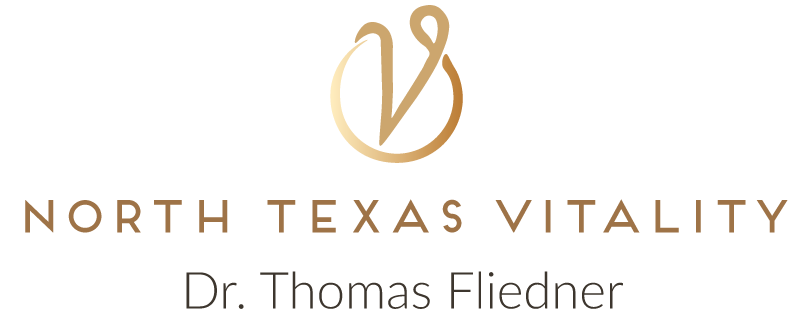Functional Exercise 101: What It Is, Why It Works, and How to Start

Table of Contents
- What Is Functional Exercise?
- Why It Works For Real Life
- Hormone And Longevity Tie-Ins
- A Simple 3-Day Functional Plan
- At-Home And Gym Options
- How to Progress Without Burning Out
- Safety And Modifications
- Quick Add-Ons That Amplify Results
- Faqs
- Leverage Your Health Goals At North Texas Vitality
At North Texas Vitality, we frequently discuss the principles of functional medicine. Today, let’s talk about functional exercise. Both approaches view the whole body. In functional medicine, we assess how your body systems work together, and we support them with lifestyle strategies, targeted supplements, and, when appropriate, bioidentical hormones. In functional exercise, we practice real-world movement patterns, such as squatting, hinging, pushing, pulling, carrying, and rotating, so that daily life feels easier and safer.
Let’s jump in.
What Is Functional Exercise?
Rather than training isolated muscles, functional exercise trains movement patterns that you use in daily life. The focus is on the quality of motion, joint stability, and strength that transfers to everyday tasks, from lifting groceries to getting up from the floor with confidence.
The seven core exercise patterns:
- Squat: sit and stand with control. Done well, squats build real-world strength. They train hips and core, improve balance and posture, raise daily calorie burn, and reduce injury risk. Focus on a tall chest, knees tracking over toes, and a smooth sit-to-stand through your heels.
- Hinge: hip-back movement for safe lifting. A hip hinge is a forward bend from the hips while you keep a neutral spine. Push your hips back, keeping your ribs stacked over your pelvis, and feel your weight distributed evenly between your mid-foot and heels. This pattern protects your back, powers strong deadlifts and kettlebell swings, and teaches you to lift safely in daily life.
- Lunge: step and lower with balance. Step forward or back and place your feet hip-width apart, like standing on railroad tracks. Lower straight down, keep your core engaged, and let the front knee track over the middle of the foot. Press through the front heel to stand tall, then repeat on the other side.
- Push: press away from your body. Push movements drive weight away from you while training the chest, shoulders, triceps, and core. Think wall or incline push-ups, dumbbell presses, or a cable chest press. Keep your wrists stacked over your elbows, your ribs gently down, and your shoulder blades gliding on the rib cage. Press smoothly, avoid shrugging, and keep a straight line from head to heels. This builds upper-body strength, supports posture, and makes everyday tasks like closing heavy doors feel easier.
- Pull: row or pull toward your body. Pull movements bring weight toward you or your body toward a fixed point, training the upper back, lats, rear shoulders, biceps, and core. Think one-arm dumbbell rows, seated cable rows, lat pulldowns, and pull-ups. Keep your chest tall, shoulders down and back, and elbows driving toward your hips. Pause briefly with shoulder blades squeezed, then return with control. Strong pulls improve posture, protect shoulders, and make daily tasks like lifting bags or opening heavy doors easier.
- Carry: hold weight while walking upright. Loaded carries mean you pick up a weight and walk for time or distance. They build core stability, improve posture, enhance grip strength, and promote shoulder health. Try farmer carries (with weight in both hands), suitcase carries (one side), rack carries (with weights at your shoulders), or overhead carries (with arms straight up). Stand tall with ribs stacked over hips, keep steps quiet, and let your eyes look forward. Start with 20 to 40 seconds per set, rest briefly, and repeat the set. Strong carries make real life easier, from hauling groceries to rolling luggage through an airport.
- Rotate/Anti-rotate: resist or produce rotation through your core. Rotation teaches a smooth, controlled twist through the mid-back, while anti-rotation teaches you to resist unwanted twist and keep the spine stable. Think cable or band chops and lifts, medicine-ball side throws, or seated and half-kneeling torso rotations for rotation work, and Pallof presses, suitcase carries, planks with reach, dead bugs with a band, or half-kneeling presses for anti-rotation. Keep ribs stacked over hips, hips square, and a long spine; turn from the mid-back rather than the low back; exhale on effort; move smoothly; and stop before the low back starts to crank. These patterns protect your spine, improve balance and gait, and add power you can use every day.
“Functional exercise is not about chasing numbers. It is about moving well so you can enjoy your day. Build simple patterns, add a little weight when you are ready, take walks after meals, and protect your sleep. Small, steady steps create big changes in how you feel.” ~ Dr. Fliedner
Why It Works For Real Life
Functional sessions improve mobility, balance, core control, and strength simultaneously. You get more done in less time, which helps busy adults stay consistent. This style of training also respects how the body stabilizes through feet, hips, and core, which protects joints and reduces common aches.
Hormone And Longevity Tie-Ins
Exercise is one of the most reliable ways to support metabolic health and healthy aging.
- Insulin sensitivity improves as you build muscle and move more often.
- Cortisol can settle with consistent training, good sleep, and breath-paced sets.
- Sleep quality often improves when you combine strength work with steady aerobic activity.
- Muscles and bones benefit as strength training maintains lean mass and bone density.
If you are working with Dr. Fliedner on BHRT or weight management, we will help you set a simple weekly schedule that fits your life and recovery. Dr. Fliedner has created a A Simple 3-Day Functional Exercise Plan you can download and start this week.

A Simple 3-Day Functional Exercise Plan
How to use this: Warm up for 5 minutes with easy cardio, then move through each pair as a superset. Choose a weight that feels like 7 out of 10 effort, leave 1 to 2 reps in the tank, and rest 60 to 90 seconds between rounds. Total time: about 35 to 45 minutes.
Day One
- Goblet Squat: 3 sets of 8 to 10
- Half-Kneeling Cable or Band Row: 3 sets of 10 to 12
- Hip Hinge: Kettlebell deadlift or Romanian deadlift, 3 x 8
- Suitcase Carry: 3 x 30 to 45 seconds per side
- Optional finisher: 8 minutes easy cardio
Day Two
- Reverse Lunge: 3 x 8 per leg
- Incline or Floor Push-up: 3 x 6 to 10
- Pallof Press (anti-rotation): 3 x 10 per side
- Farmer Carry: 3 x 30 to 45 seconds
- Mobility: 5 minutes for hips and upper back
Day Three
- Step-up: 3 x 8 per leg
- One-Arm Dumbbell Row: 3 x 10 per side
- Hip Hinge: Kettlebell swing or light deadlift, 3 x 10
- Overhead Carry or Rack Carry: 3 x 20 to 30 seconds
- Zone 2 Cardio: 15 to 25 minutes at a conversational pace on a walk, bike, or rower
Weekly rhythm: Two strength days plus one optional day and a few Zone 2 sessions is a strong start. If time is tight, do two strength days and add short walks after meals.
At-Home And Gym Options
- At home: dumbbells, a kettlebell, and a sturdy chair or step. Use a looped band for rows and Pallof presses.
- Gym: cable machine for rows and anti-rotation work, trap bar for hinges, turf for carries.
- No equipment: bodyweight squats to a box, wall push-ups, split squats, backpack carries, plank shoulder taps.
How to Progress Without Burning Out
- Small jumps: add 2.5 to 5 pounds or 1 to 2 reps each week.
- Better form first: depth, tempo, balance, and pain-free range beat heavier weights.
- Deload every 4 to 6 weeks: reduce sets or weight for one week.
- Track three wins: total reps, total weight, and how you feel 24 hours later.
Safety And Modifications
- Knees: choose box squats and reverse lunges, shorten range if needed.
- Back: start with hip hinges against the wall, then kettlebell deadlifts. Keep a neutral spine.
- Shoulders: do elevated push-ups or a cable press path that feels smooth.
- Balance: train near a stable surface. Use split-stance exercises before deep lunges.
“Consistency beats hero workouts. Choose a plan you can repeat next week, then the week after, and that is how results stick. Aim for two strength sessions, a few easy walks, solid sleep, and steady nutrition. Keep the weights challenging but repeatable, listen to your body, and let progress build one good week at a time.” ~ Dr. Fliedner
Quick add-ons that amplify results
- Walk most days: 20 to 30 minutes at a conversational pace.
- Protein target: include protein at each meal.
- Creatine: often helpful for midlife strength and cognition.
- Sleep: regular schedule and a dark, cool room.
- Breath work between sets: longer exhales calm the system.
FAQs
How is functional exercise different from bodybuilding workouts?
You still get stronger and build muscle, but the emphasis is on moving well through patterns that show up in daily life. You train stability, mobility, and strength together.
Can beginners do this?
Yes. Start with bodyweight or light dumbbells, keep reps smooth, and progress gradually. If you have pain or a medical condition, check in with our team before you begin.
Where does cardio fit?
Add two to three Zone 2 sessions per week, or short walks after meals. A combination of strength training and steady cardio is a powerful approach for improving insulin sensitivity and boosting energy.
What about the Turkish get-up?
It is a great functional move that blends mobility, shoulder stability, and core control. We can add it once you feel comfortable with the basics.
Leverage Your Health Goals At North Texas Vitality
Functional exercise pairs beautifully with functional medicine. If you are looking for a plan that supports hormones, metabolism, joint health, and long-term energy, we are here to help.
At North Texas Vitality, Dr. Thomas Fliedner provides personalized hormonal care with a focus on Bioidentical Hormone Replacement Therapy (BHRT). Because BHRT uses hormones that are chemically identical to those your body produces, it offers a natural and effective way to address imbalances related to menopause, andropause, or other conditions.
Your care is comprehensive. We pair hormone therapy with nutrition guidance, stress management strategies, and an easy-to-follow exercise plan so your daily habits support your treatment. Dr. Fliedner also offers The Daily Dose, a curated supplement guide that highlights essentials such as magnesium and vitamin D to help regulate hormones and enhance results. Ongoing consultations and regular lab monitoring enable fine-tuning, ensuring your plan remains aligned with your goals.
Next step: Schedule a Hormonal Health Visit with Dr. Fliedner and his team. He will review your goals, medications, and lab results, then create a personalized starter program that you can sustain. To request an appointment, please call (469) 455-1665 or complete the form below.
